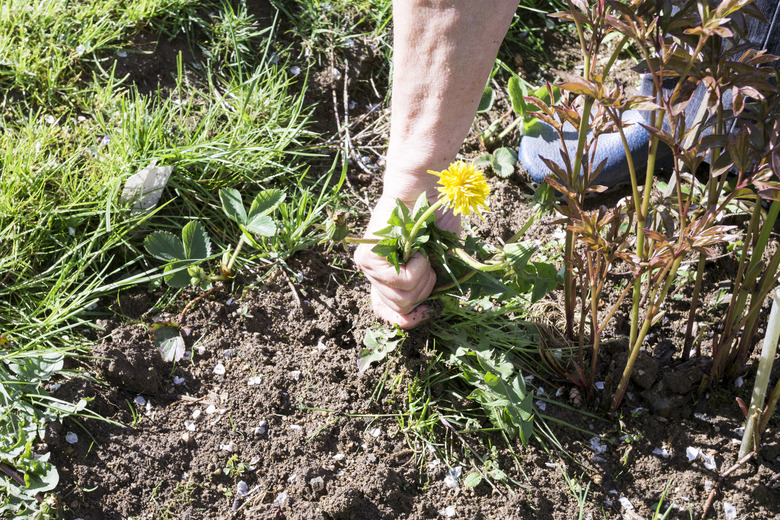How To Clear Overgrown Weeds
You can find all types of chemicals to kill and clear overgrown weeds, but those toxic chemicals are often harmful to the environment and make the soil unsuitable for future growth. Manual weed removal is usually the safest option even though it's a lot of work. Some people recommend tilling the area to get rid of weeds, but this can stir up weed seeds in the soil, exposing them to light and moisture to encourage them to grow. Consider other methods to kill and clear weeds in an overgrown area to prepare it for planting.
Dig to Clear Overgrown Weeds
Dig to Clear Overgrown Weeds
Rolling up your sleeves and getting to work with the right tools is an effective way to clear overgrown weeds without chemicals. You can pull weeds, but larger overgrown weeds might need a little extra help coming out of the dirt. Before getting started, cover as much of your skin as possible with long sleeves and pants to keep irritating weeds away from your skin.
Pull or dig overgrown weeds when the soil is damp. If it hasn't rained lately, you can water the area to wet the soil. The weeds come up easier when the soil is wet, and you're more likely to get all of the roots out of the soil.
A garden hoe is an effective tool that helps you dig up weeds while standing. You can also use specialty weeder tools that are designed to dig up the weeds without requiring you to bend down. If you pull out some of the weeds by hand, grasp each plant individually at the base to prevent breaking it off and leaving the roots behind to regrow. Once you pull or dig the weeds, remove them from the garden area to prevent them from spreading seeds.
Cut Down Tall Weeds
Cut Down Tall Weeds
If the weeds are completely overgrown, they can be extra tall and difficult to manage. Cutting down the tall weeds can make it easier to use other treatment methods to clear the area completely, such as smothering the weeds. A string trimmer or brush mower can cut down the tall weeds easily. If you don't have access to that type of equipment, you can cut down the tall weeds manually with a scythe , moving the blade slowly and carefully until you get the hang of the motion safely.
Rake up the cut weeds and move them out of the area. You can mow the area to cut down the weeds even more once they're a manageable height. You'll then need to smother the weeds or dig remaining roots to keep the weeds from growing back.
Smother Overgrown Weeds
Smother Overgrown Weeds
Once you get the weeds cut down and under control, you can smother the remaining parts of the plant to kill them completely. You can use a variety of materials, including black landscape fabric, multiple layers of newspaper, cardboard or black plastic to smother the weeds. The goal is to keep sunlight from reaching the weeds. This process can take a full growing season to completely kill the weeds.
If you use newspaper or cardboard, the material breaks down eventually. You can put organic mulch over the newspaper or cardboard for additional layering over the weeds. The mulch also breaks down and adds nutrients to the soil. If you use plastic, you'll need to remove it once the weeds are dead.
Kill Overgrown Weeds With Heat
Kill Overgrown Weeds With Heat
If you're not having success with other methods, you can use heat to torch the overgrown weeds, which is a process called thermal weeding. A weed torch is designed to kill the weeds and has a small nozzle with adjustable flames to control where you direct the heat. This propane-powered option destroys the weed's protective layer and boils the water inside the plant, leading to its death. You only need to hold the heat over the weed for a few seconds to do enough damage to destroy it.
Only use a weed torch on a calm day and avoid areas that are dry or full of brown debris that can catch on fire easily. Check for any burn bans in your area before using the torch. Keep a garden hose or fire extinguisher handy in case the torch sets anything on fire.
